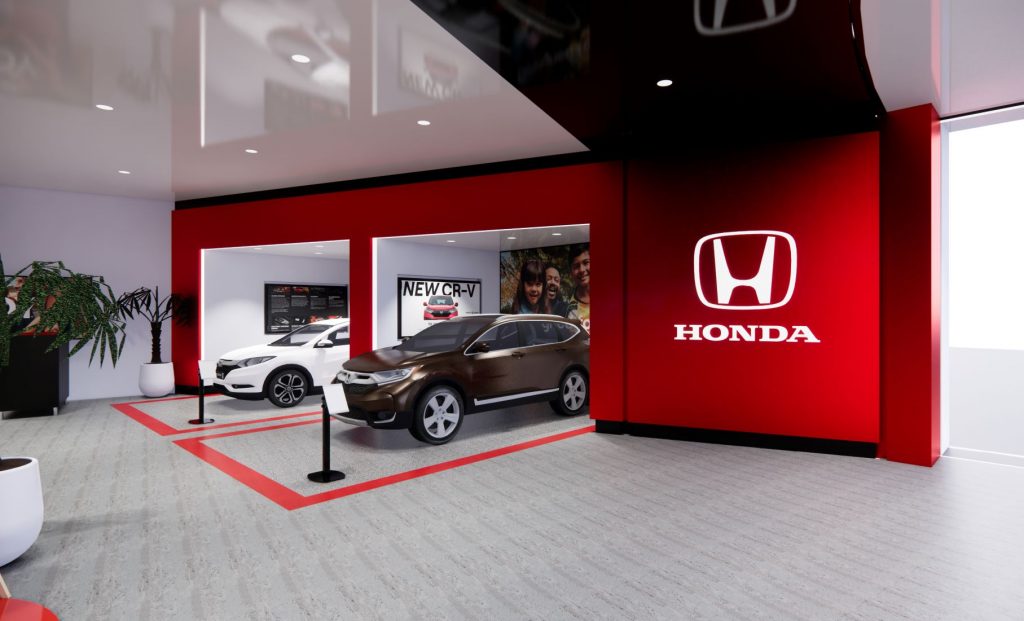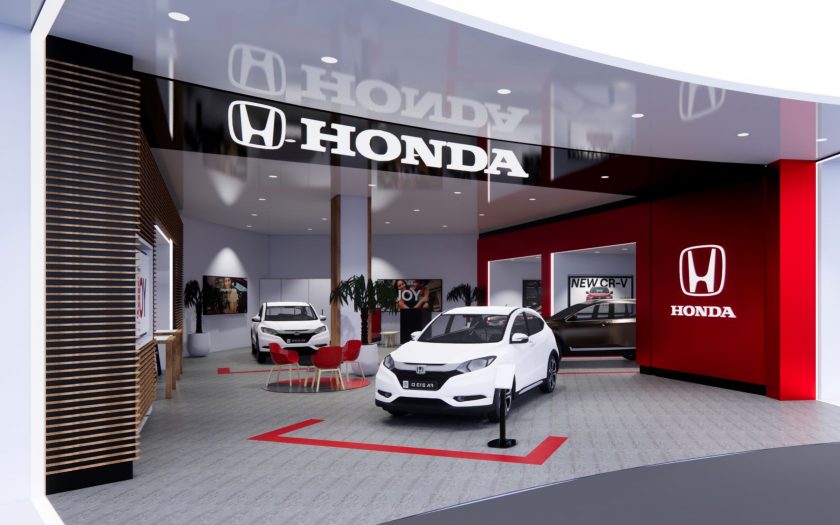HONDA and MERCEDES-BENZ are introducing a new sales model and changing the way we buy cars. Will it increase what you pay? Here’s HONDA’s explanation why it won’t.
THERE HAS BEEN MUCH DISCUSSION and not a little misinformation about the proposed new marketing and sales business models being introduced into Australia by Honda and Mercedes-Benz.
One of the most concerning rumours regarding the new “agency-style” business model is that new car prices would rise as a result.
Honda strongly denies that this is the case and presents the following argument to support its case (we present Honda’s argument without alteration):
“Across the 18 individual grades that make up the current Honda vehicle range, the largest straight price increase that occurred on July 1 this year, for any one grade, was $300. There was no change to the price of two grades, while the rest of the range was somewhere in between.
But these price changes are unrelated to the introduction of the new business model.
Like many other consumer goods and industries, changes to the price of new vehicles are a regular occurrence and can be the result of a wide variety of factors.
These factors can include currency exchange rate fluctuations, model lifecycle timings, introduction of new models or grades, specification or equipment changes, production capacity constraints, raw material availability and cost, supply and demand pressures, cost of individual components and parts, and customer preferences, not to mention the underlying fundamentals of running a sustainable business in a highly competitive environment.

Sometimes prices can change from one month to the next, sometimes they remain steady for longer periods.
This is the full list of price changes that occurred on July 1, 2021, for the 18 individual Honda grades covering the complete Civic, Accord, Odyssey, HR-V and CR-V line-ups: no change to two grades, an increase of $100 to one grade, $200 increases to eight grades and $300 increases to seven grades.
To put the price changes another way – using the $200 increase that occurred on the popular HR-V RS as the example, that is equivalent to around 2.5 tanks of fuel … or around one quarter of the annual vehicle registration cost in metropolitan Melbourne … or just over 0.5 percent of the drive away purchase price.
Whichever way you choose to measure it, claiming these changes are indicative of large price increases under the agency business model, is just not accurate.
So why are some people saying that prices have risen significantly with the launch of Honda’s new business model on July 1?
It’s a good question and one you should really ask them to explain, as the facts do not support the assertion.
A driveaway price does not equal a price rise
What did occur on July 1, 2021, was the introduction of a new, national drive away price for every vehicle in the Honda range, under the ‘Honda Price Promise’.
Honda’s national driveaway price includes all on-road costs and statutory charges, as well as the metallic or pearlescent paint colour chosen by the customer. It also includes five years of premium roadside assistance, as well as an industry-leading low price service offering, where customers will now only pay $125 for each of the first five standard scheduled service intervals.
The only items not included in the new vehicle price are any Honda Genuine Accessories selected by the customer to personalise their vehicle. Concession benefits may also apply for eligible recipients.
The difference between the Manufacturer’s List Price (MLP) that was used previously – which is just the starting point for what a new vehicle will cost to purchase – and the new National Drive Away Price that applies from July 1, is the specific costs and statutory charges involved in purchasing and registering a new car so it can be driven on the road.
These on-road costs and statutory charges are different in every State and Territory, and can also differ between metropolitan, provincial and rural areas. Using Victoria as an example, these costs include the registration fee, Transport Accident Charge, insurance duty and motor vehicle duty.
But these are costs and charges that apply to the purchase of every new car sold in Australia, regardless of make or model or geographic location or selling dealer. They apply whether the vehicle is purchased from a Honda Centre with an upfront drive away price, or from another brand operating with the MLP and adding on all the on-road costs and statutory charges to arrive at the drive away price.
The end result is the same – these on-road costs are part of the final transaction price for every new vehicle sold in Australia and do not in any way constitute a price rise under Honda’s new business model.
As of July 1, the national drive away price for all Honda vehicles is available for prospective customers to view on the Honda website via a new online vehicle configurator.
The configurator is one of the major changes to Honda’s corporate website and it offers customers a simple and engaging way to view vehicle information and pricing, as well as ‘build’ the vehicle they are interested in purchasing.
If/when vehicle prices change at any point in the future, up or down, it will be available for all to see on the Honda website – simple, straightforward, transparent.
What is a fair and reasonable timeframe to measure success?
Honda’s new agency-style business model represents a level of change and transformation unseen in the Australian new car market for more than half a century. And it has all been designed, built and launched during a once-in-100-years global pandemic, the effects of which are well known and widely reported.
Restructuring a business is not easy – transforming a business is doubly hard, as it involves changes to everything we do. No element of the way in which Honda sells vehicles in this country has been left unchanged or unchecked as part of the transformation.
We knew, and our business partners knew, there would be a period of transition following such a significant change to the way the Honda brand operates in Australia.
To assess its success or otherwise after just three months – a period that has also been impacted by the global pandemic, production shortages and supply chain delays, varying state, regional and local government restrictions, and business closures – is premature at best.
When you’ve been doing something the same way for over 52 years – or over 624 months – attempting to measure the viability of a new way of doing things after just three months, has little merit. It is nothing more than a sample and it is statistically inconclusive.
The changes we have made are long-term investments in the future of the Honda brand in Australia and in the 90-strong Honda Centre network of allied and independent businesses.
Calling out one single metric in the form of retail sales numbers as being the ONLY measure of success, is easy to do, but it in no way accurately captures the true picture of what is occurring at Honda Centres around the country.
Since July 1, more than 3500 customers have experienced the new Honda way and the feedback has been overwhelmingly positive. Customers have commented favourably on the ease of the process, how it is both hassle and stress-free.
The result is good Net Promoter Scores (NPS) across important key performance indicators like the purchase, order and delivery phases, showing broad acceptance of the Honda Price Promise and the new buying process.
Despite an enormous level of change in how the Honda Australia business interacts with the national network of Honda Centres, the launch and transition phase to date has been executed almost perfectly, with 99 percent of the new systems available, operating and stable over the first few months.
That is unequivocally an outstanding result, given the scale and complexity of the changes.
Despite the many challenges presented by the impact of COVID over this period – which saw 65 percent of Australia’s population in long-term, hard lockdown and the majority of Honda Australia’s regional staff unable to step foot inside a new Honda Centre to support the network – feedback on the new business is positive and confidence is high.
The new car business is a complex, multi-faceted, challenging and rewarding industry to be involved in and despite the naysayers, the Honda team continues to build on the strong results achieved so far, is energised for the future and ready to offer customers a simple, straightforward and enjoyable purchase and ownership experience.”
It is unprecedented that a car company should go to such lengths and detail to justify a change in their internal marketing process. Honda has every right to change the way it does business and how it negotiates with its dealers who, remember, are individual and autonomous businesses in their own right. seniordriveraus has investigated the new sales model and sees many advantages for car buyers, although we also anticipate some initial problems. As always, customers are able to vote with their feet, walking away if they are unhappy with what they are being offered.
In a recent YourLifeChoices podcast, seniordriveraus was interviewed by John Deekes and explained how the new sales model differs from what most buyers have been used to, and what buyers can expect.
If you’d like to learn more about issues affecting older drivers, retirement, health, superannuation, travel and much, much more, subscribe to YourLifeChoices (it’s free) at https://www.yourlifechoices.com.au/ and listen to the podcast (including interviews with seniordriveraus) hosted by John Deeks at https://www.yourlifechoices.com.au/podcasts/mind-your-own-retirement
